Posts Tagged: Bees
Outstanding PBS Deep Look Video: 'Why Do Sunflowers Face the Sunrise?'
Sunflowers bring out the best in us. They bring us joy, happiness, hope and unity. But wait until you watch the newly released PBS Deep...

The newly released PBS Deep Look video "Why Do Sunflowers Face the Sunrise?" is a crowd favorite. (Screen shot)
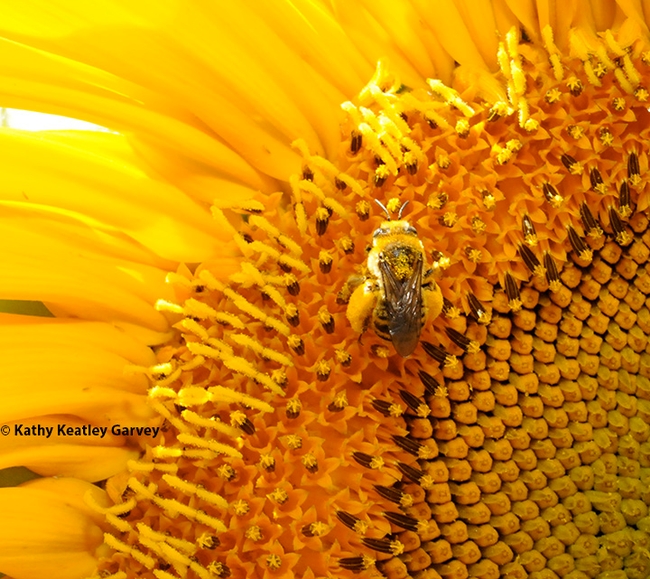
A bee commonly found on sunflowers is Epimelissodes obliqua expurgata, formerly known as Svastra obliqua expurgata. (Photo by Kathy Keatley Garvey)
Learning About the Bees and the Nutrition They Need
If you missed the eagerly anticipated UC Davis Department of Entomology and Nematology seminar by apiculturist Juliana Rangel Posada, an...

A screen shot from the seminar of apiculturist Juliana Rangel Posada of Texas A&M.
Zeroing in on Honey Bees
The next seminar hosted by the UC Davis Department of Entomology and Nematology promises to be of great interest to bee scientists, beekeepers,...

bugsquadblog
No Labor Day Holiday for the Honey Bees
Holiday? What holiday? It's Labor Day, but honey bees aren't relaxing. They're out in force collecting nectar, pollen, water...
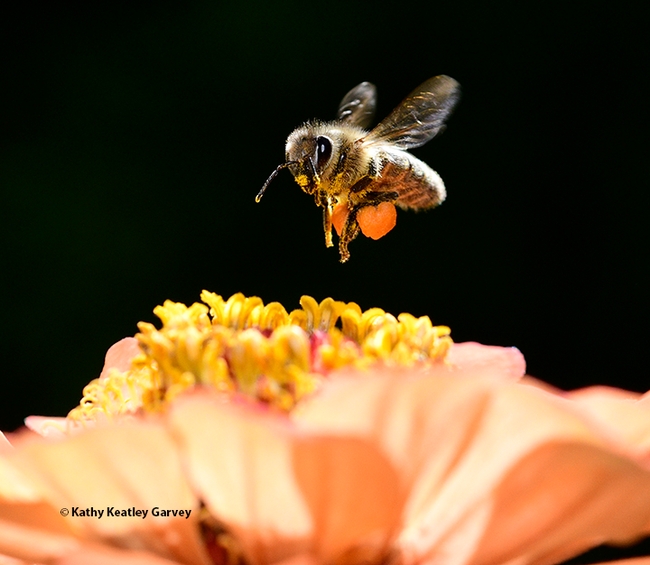
A honey bee packing a huge load of orange pollen from zinnias as it heads for another blossom in a Vacaville garden. (Photo by Kathy Keatley Garvey)
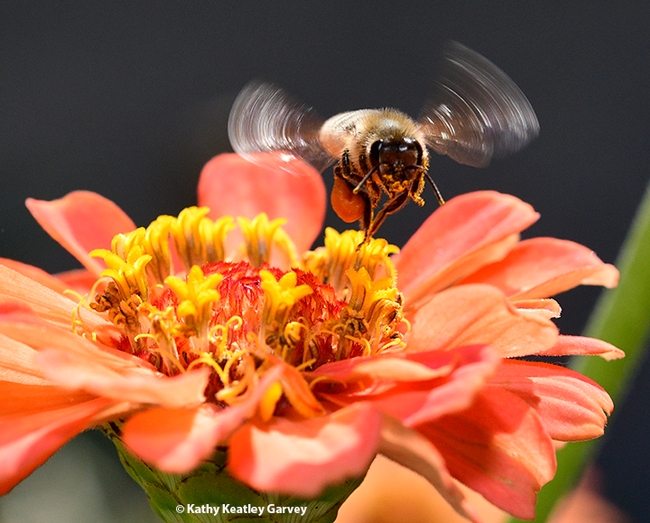
A honey bee, its wings a'buzzing, slips through the petals of a zinnia. (Photo by Kathy Keatley Garvey)
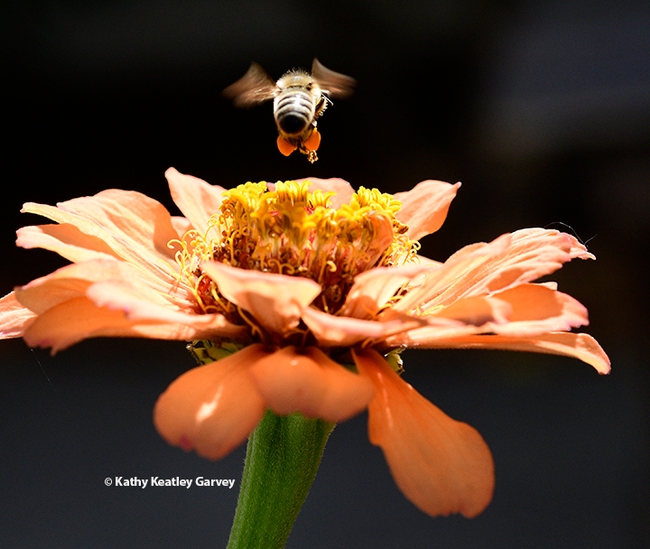
All finished here. Next zinnia here I come! (Photo by Kathy Keatley Garvey)
Bumble Bees: Feeling Impact of Climate Change
We remember the reaction of Robbin Thorp (1933-2019), UC Davis distinguished emeritus professor of entomology and an international...
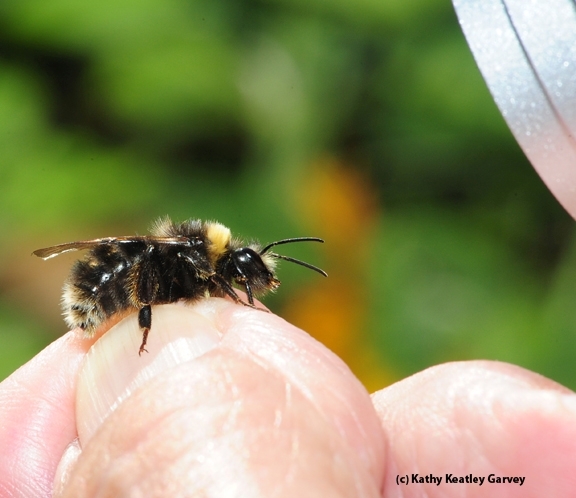
UC Davis research shows that rising temperatures are particularly alarming to some bumble bee species, including the Western bumble bee, Bombus occidentalis. This one was located on Aug. 15, 2012 in the Mt. Shasta area. (Photo by Kathy Keatley Garvey)
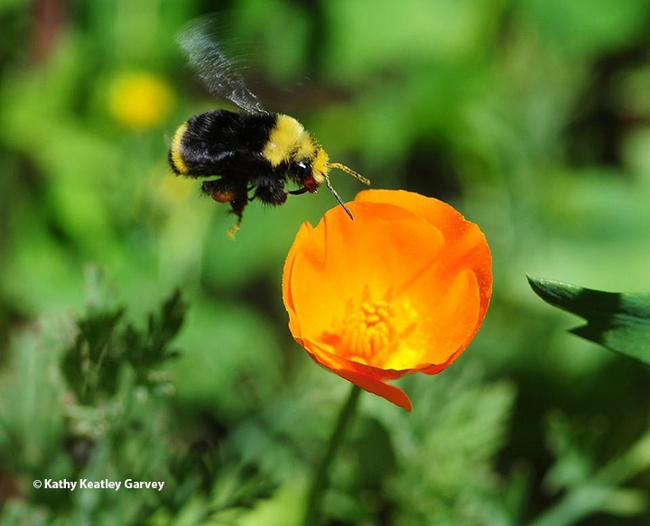
UC Davis researchers found that one of "the winners" in their climate change study is the yellow-faced bumble bee, Bombus vosnesenskii, shown here heading for a California golden poppy. (Photo by Kathy Keatley Garvey)
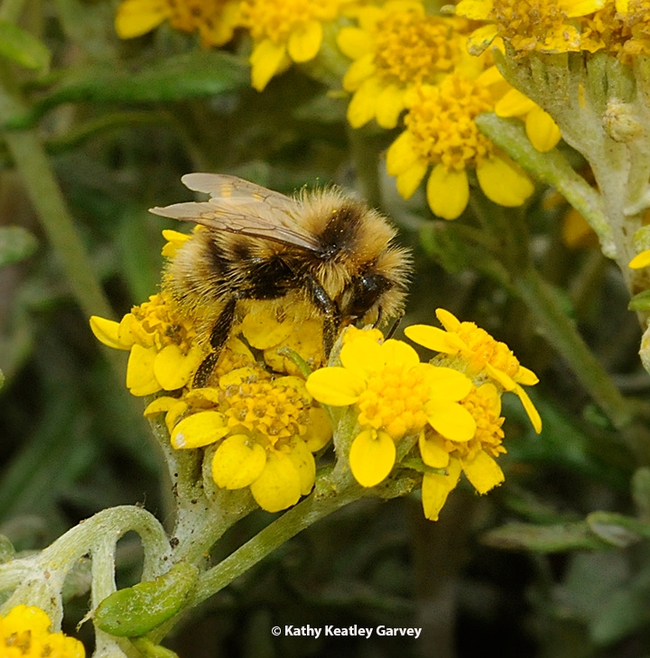
A male bumble bee, Bombus bifarius, nectaring on coastal goldfield, Lasthenia minor, at Bodega Bay. A UC Davis study shows that the rising temperatures are particularly alarming to a number of species, including this one. (Photo by Kathy Keatley Garvey)

